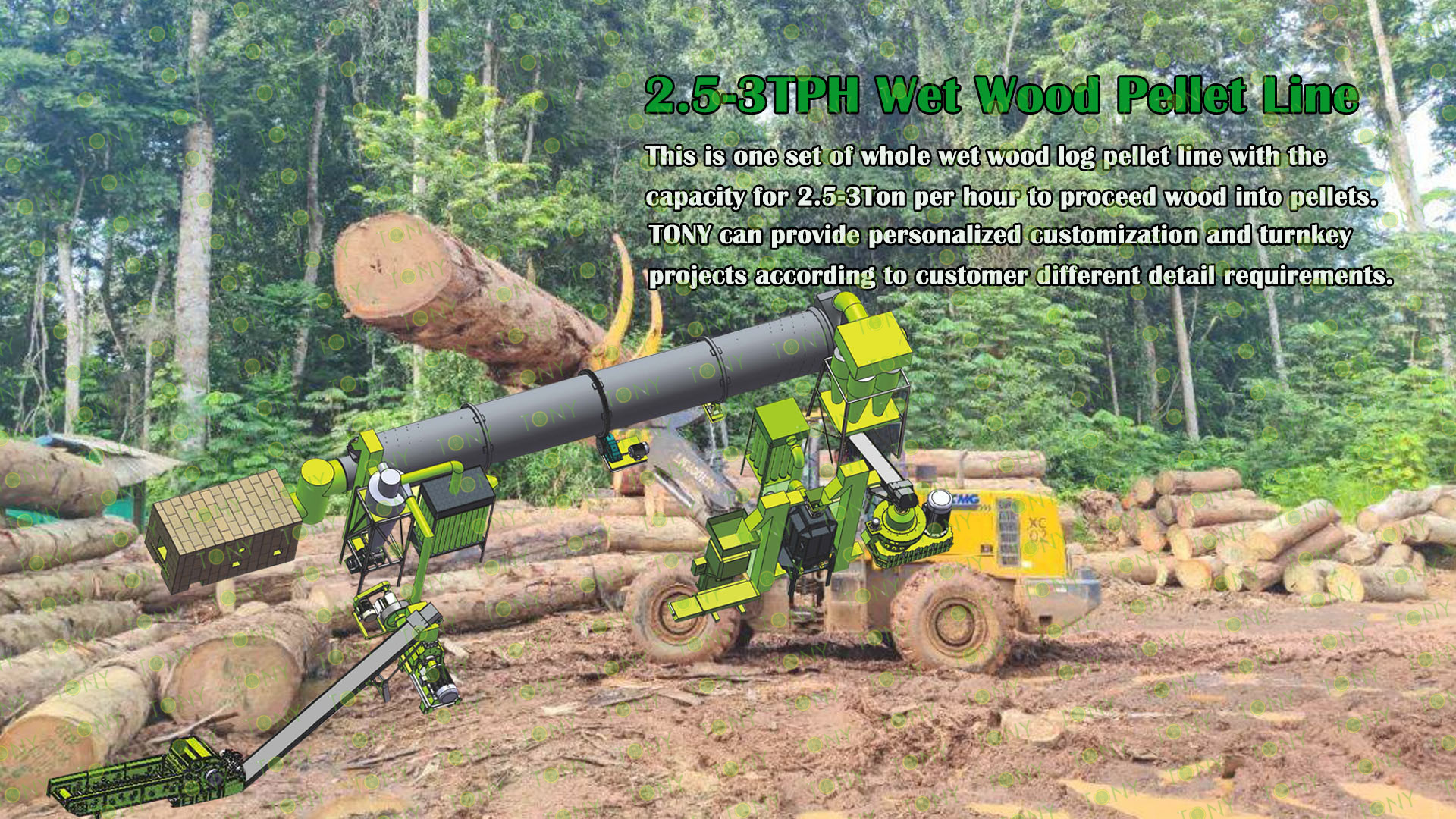

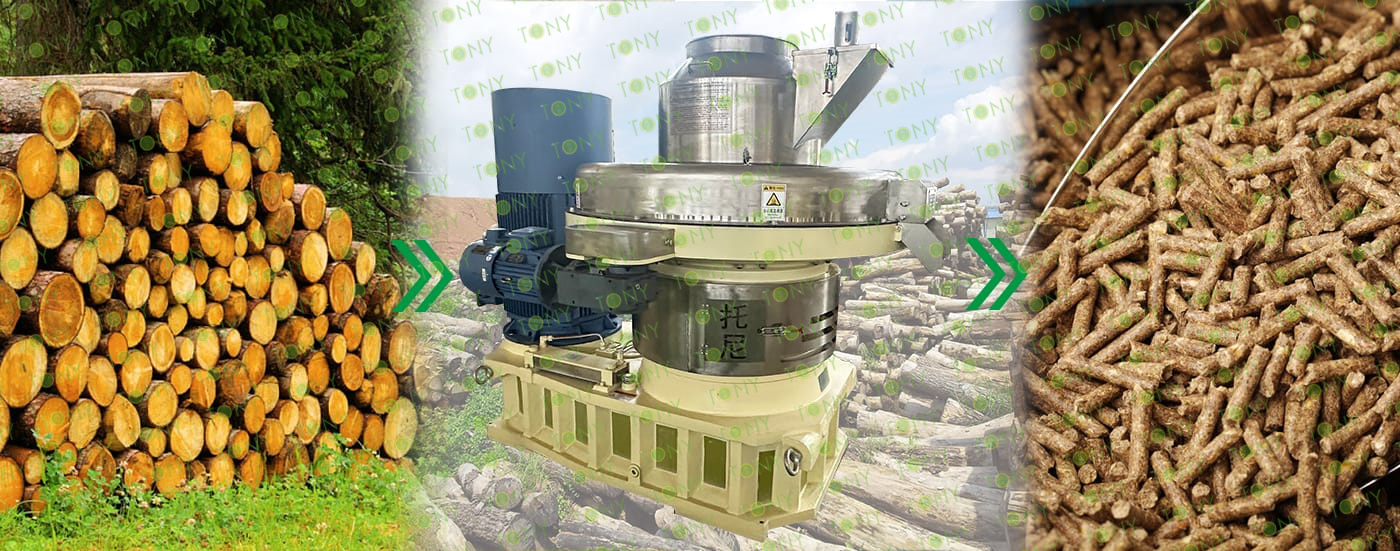
1. The Working Principle Of Wet Wood Biomass Pellet Processing Equipment
Wet - wood biomass pellet processing equipment is used to chop and compress bundles or packets of wet - wood and other biomass raw materials into pellet fuel. Its working principle is to first chop the wet - wood raw materials through shredders and other pretreatment equipment. Then, it is pressed through the pelletizing machine, and finally, pellet biomass fuel that meets quality standards is produced.
2. Characteristics Of Wet Wood Biomass Pellet Processing Equipment
(1) Wet - wood biomass pellet processing equipment features high efficiency and low energy consumption. It can rapidly process biomass raw materials into fuel pellets, significantly improving production efficiency.
(2) The biomass pellet machine has strong material adaptability and is suitable for the molding of various biomass raw materials. The pellet machine is equipped with molds of various specifications. According to different biomass raw materials, the corresponding mold can be selected for processing, enhancing the adaptability of processing.
(3) The design of wet-wood biomass pellet processing equipment is mature. The finished pellets have stable molding, stable output, and high quality.
(4) Biomass pellet processing equipment is simple to operate, easy to use, has a high degree of automation, requires less labor, effectively reduces labor intensity, and improves production.
3. Application Scenarios Of Wet - Wood Biomass Pellet Processing Equipment
(1) Domestic Solid Fuel: Wet - wood pellet fuel has a high utilization rate, is convenient for storage and use, and is hygienic and safe. It can be used for home heating.
(2) The Main Solid Fuel For Industrial Boilers: It can replace raw coal, heavy oil, and gas, reducing air pollution. For every 10,000 tons of biomass fuel burned, it can replace 7,000 tons of standard coal, reduce SO₂ emissions by 165 tons, smoke and dust emissions by 80 tons, and carbon dioxide emissions by 14,400 tons.
(3) Thermal Power Generation: The fuel calorific value can reach 3400 - 6000 kcal.
In simple terms, wet - wood biomass pellet fuel can be described as "environmentally friendly", "energy - saving", "renewable", and "with zero carbon emissions". Biomass fuel is the best renewable energy source to replace coal. From the perspectives of cost, energy conservation, and environmental protection, biomass fuel is a better alternative to coal.

TONY Brand 2.5-3 Ton/Hour Wet - Wood Pellet Manufacturing Plant can take wet wood, various types of wood - related biomass materials, such as branches, small - diameter logs, and wood shavings, with wet wood as the main raw material. After pretreatment and processing, it is solidified into high - density wood pellet fuel. This fuel is an ideal substitute for coal and oil and plays a role in energy conservation and emission reduction. At present, it has been widely used in regions rich in wood resources.
1. Capacity: 2.5-3 Ton/Hour
2. Raw materials: Wet wood, branches, small - diameter logs, wood shavings, etc.
3. Moisture: Wet type, about 40%.
4. Application: All kinds of wood - based biomass materials suitable for pellet production.
Suitable customers: Green energy companies, forestry enterprises, and private wood - processing workshops that have advantages in wood raw materials.
5. Finished Pellets Markets: Large power plants (domestic customers, as well as some neighboring countries like Japan and South Korea, with South Korea being a major consumer), domestic heating, industrial heating, combustion heat, heating systems, boiler rooms, school canteens, foundry heat sources.

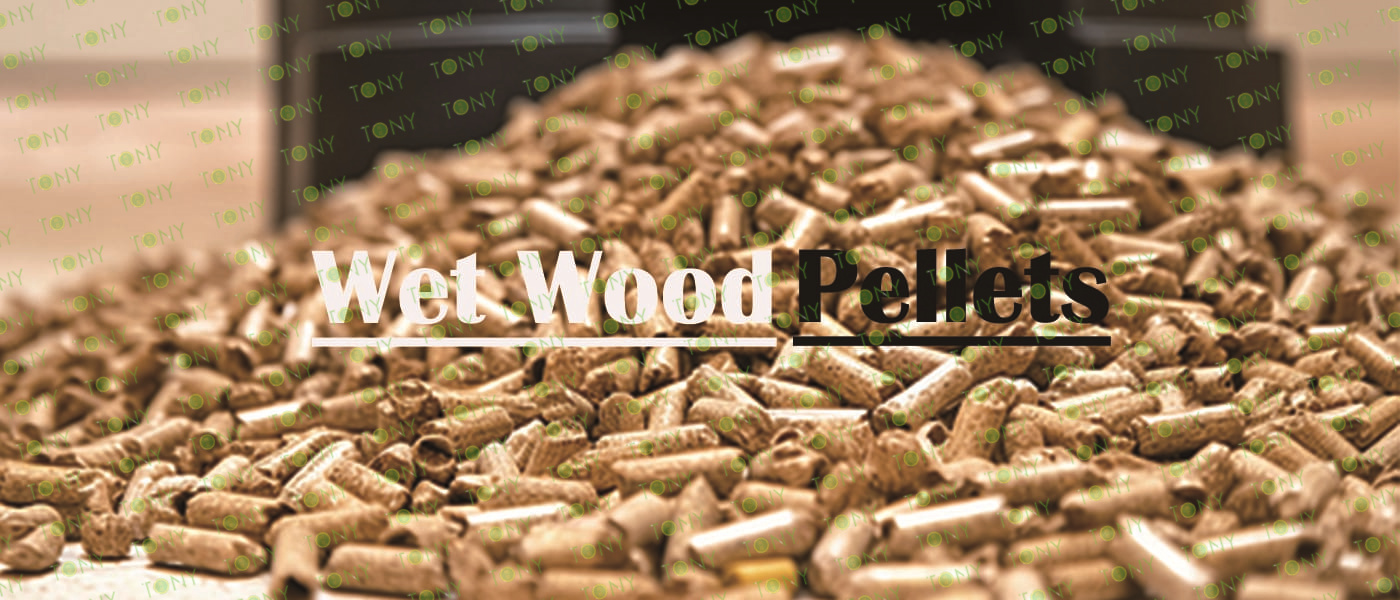
1. Project Name: Wet Wood Pellet Production Line
2. Raw Material: Bundles of wet wood
3. Moisture Content of Raw Material: 40%
4. Capacity: 2.5-3 tons per hour
5. Process: Grinding Process - Fine Crushing Process - Drying Process - Pelletizing Process - Cooling Process - Packaging Process
6. Main Equipment: Wood Chipper TPQ216 - 55KW, Multifuctional Hammer Mill-TFQ65-75-75kw, Rotary Drum Dryer, TONY Pellet Machine TYJ551 - Ⅲ - 132kw, Pellet Cooler, Small Packaging Machine and Belt Conveyors

|
How to use the TONY pellet production line to make pellets from wet wood? The process mainly includes the following steps and equipment: 1. Utilize the TONY wood chipper TPQ216 to cut wet wood with a diameter of less than 20 cm into wood chips 25 - 55 mm in length. 2. Employ the Multifuctional Hammer Mill to crush the larger 25-55 mm fragments into 8-14 mm sawdusts. 3. Use the TONY rotary drum dryer to dry the shavings with a 40% moisture content down to a moisture content of 10%-15%. 4. Operate the TONY vertical ring die pellet machine to produce pellets with a diameter of 6-8 mm. 5. Use the TONY galvanized cooler to cool the pellets from 80-90°C to 20-30°C. 6. Use the TONY semi - automatic packing machine to pack the pellets into bags, each weighing 15-50 kg. For more detailed information and quotations, you can contact TONY.TONY can provide all the above - mentioned products at highly competitive prices and with excellent quality. |
|
||||||||||||||||||||||||||||||||||||||||||||||||||
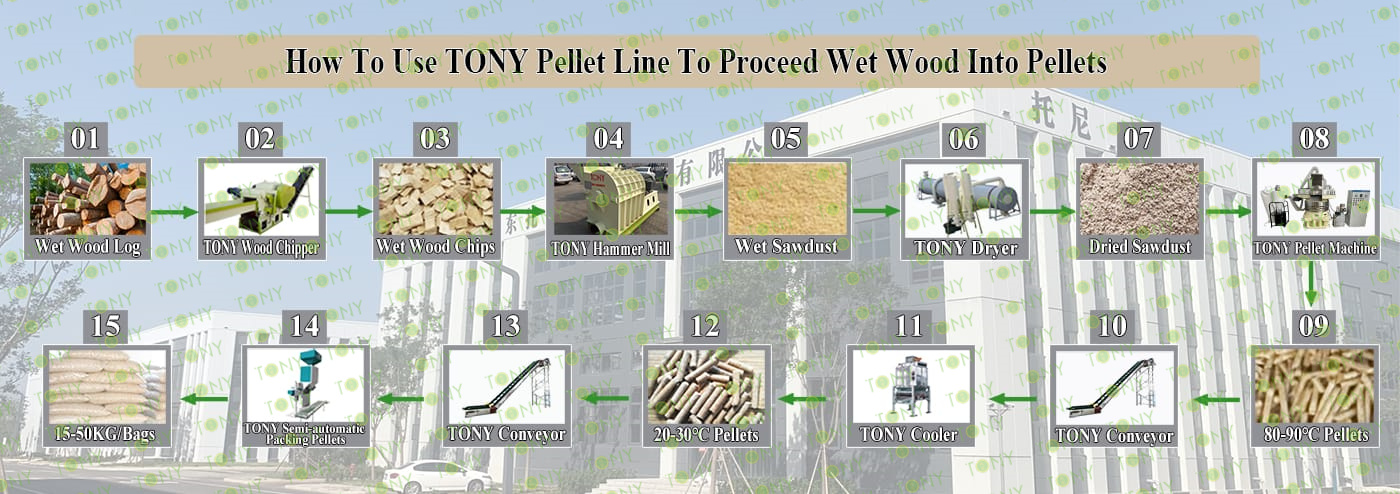

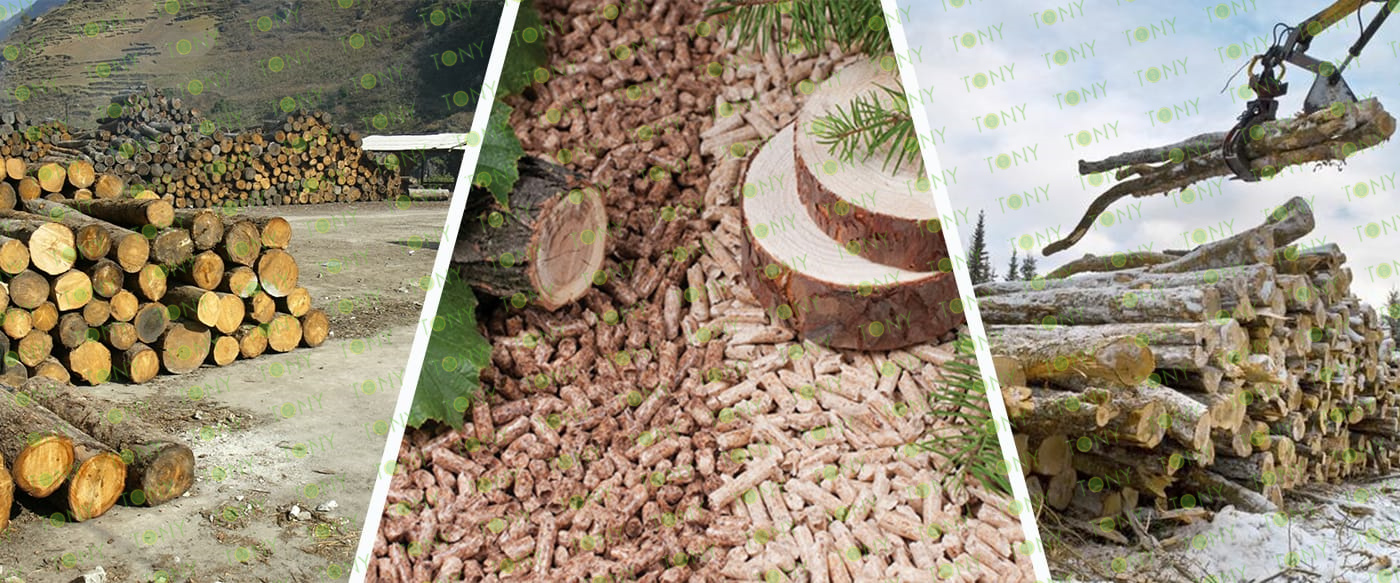

Next, TONY Will Introduce To You All The Necessary Machinery That Will Be Used For The Whole Pellet Production Line. Some Machines Can Be Custom - Made By Customers According To Different Customers' Detailed Demands. Contact Tony For More Details, Including Quotation And Layout.
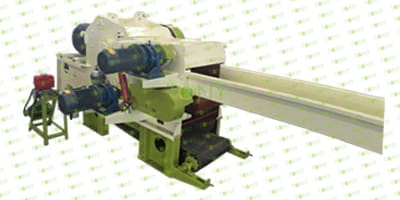 |
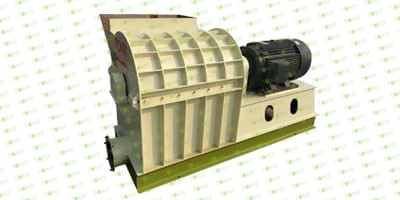 |
 |
| Wood Chipper | Multifuctional Hammer Mill | Rotary Drum Dryer |
|
1.To Grind Wood Logs φ ≤20cm Into 30-40mm Wood Chips. 2.Model: TPQ216-55KW With 2 Baldes. 3.Total Power With Belt Conveyor: 68.5KW . 4.Capacity: 4-7Ton/Hour. |
1.Crush 30-40mm Wood Chips Into 8-14mm Sawdust. 2.Model: TFQ65-75-75KW 3.Capacity: 2.5-3Ton/Hour/Set |
1.To Dry The 40% Sawdust Into 10-15% Sawdust. 2.Model: THGD1.8* 15 3.Capacity: 2.5-3Ton/Hour/Set |
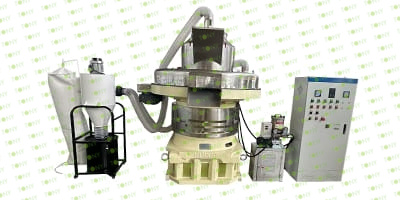 |
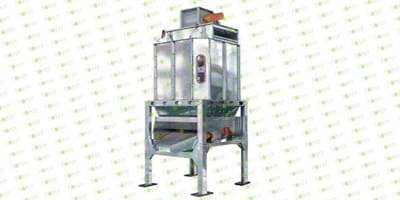 |
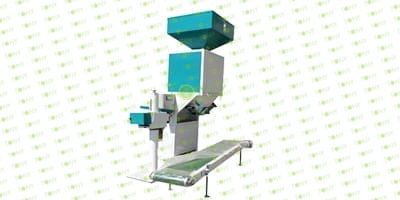 |
| Vertical Ring Die Sawdust Pellet Machine | Galvanised Cooler Seperator | Semi-automatic Packing Machine |
|
1.Model: TYJ760-III-160KW*1 Sets 2.Capacity: 2.5-3Ton/Hour/Set 3.New 304SS Type |
1.To Cool Pellets From 80-90℃ to 20-30℃ 2.Model: TCN-1. 3.Total Power With Belt Conveyor: 8.8KW 4..Capacity: 2.5-3Ton/Hour |
1.Packing Pellets To 15-50KG/Bags. 2.Model: TBF-50*1Sets 3.Capacity: 2.5-3Ton/Hour |

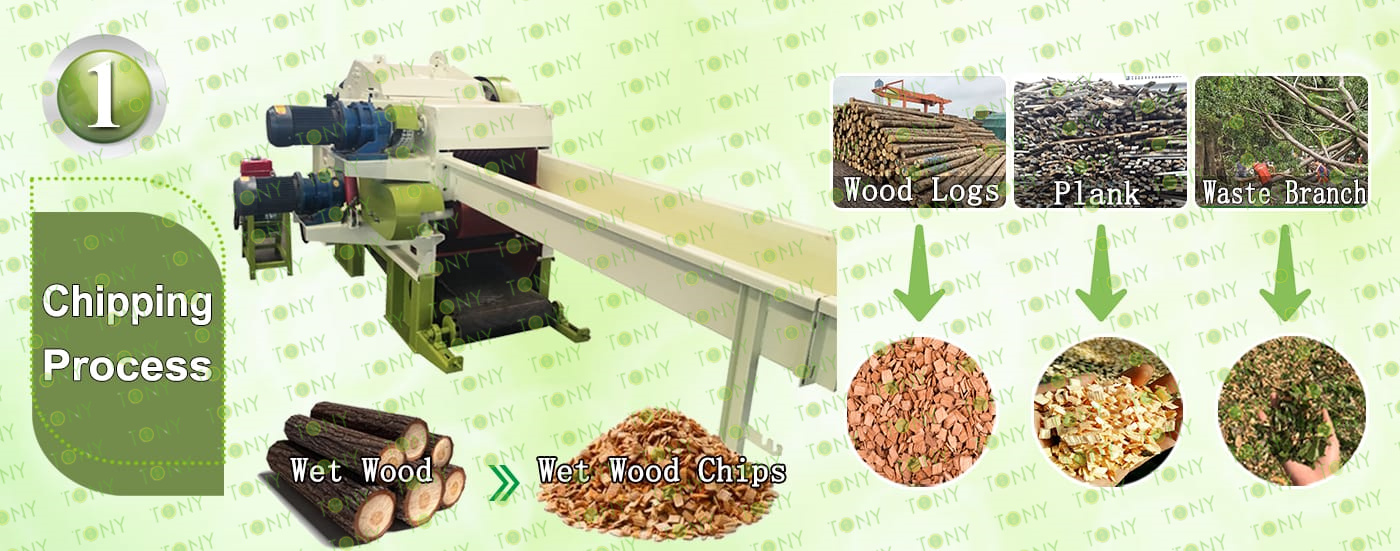
|
A.This process is mainly used to grind the wood wood logs whose diamater is under 25cm without barks into wood chips with size 25-55mm. The finish wood chips size can be adjustable by changing different sizes of screeners and adding flying knives inside the wood chipper. B.This customer use TONY Brand TPQ216 model with 2 flying baldes type: Main Parts: 1).TONY's new Wood Chipper. 2). Feed and unload belt frequency control to prevent card material 3). Hydraulic system control for more thickness of raw materials 4). Electronic control system allows the equipment to be used normally Contact TONY for more details with quotation |

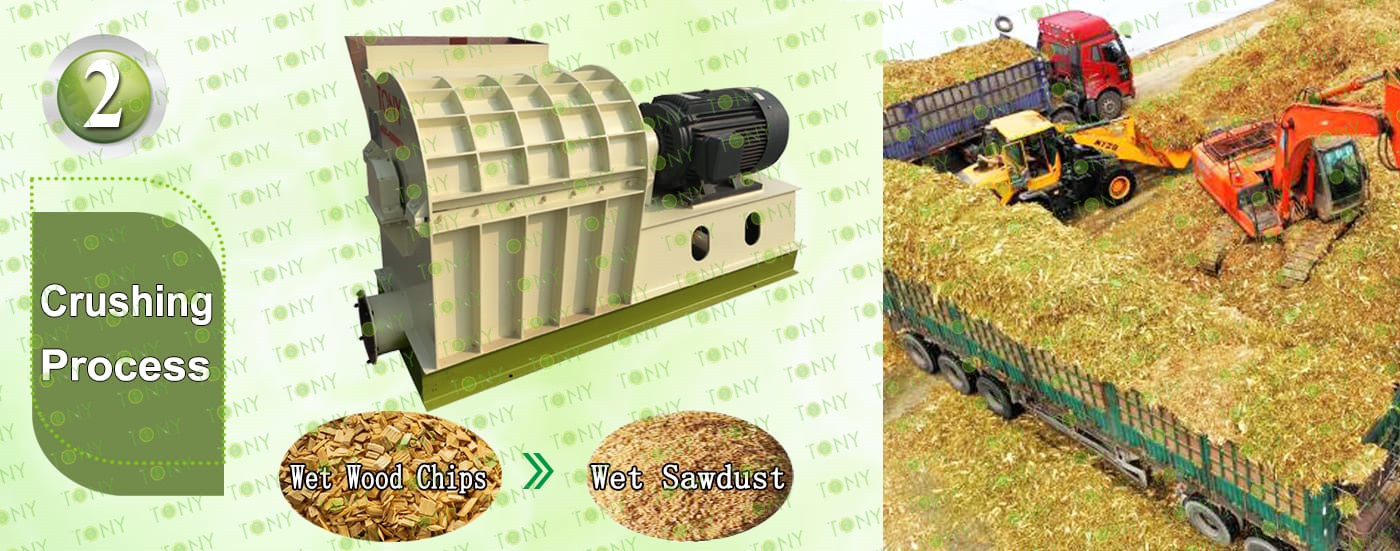
|
2.Wood Chips Fine Crushing Process: A.This process is mainly used to crush 30-40mm wood chips into 8-14mm sawdust. B.Capacity:2.5-3Ton/Hour. C.TONY use multifunctional hammer mill TFQ65-75-75KW Main Parts: 1). TONY multifunctional hammer mill. 2). 60Holes Galvanized Dust Collector. 3). Sawdust Transportation Fan Blower. 4). Cyclone With Airlock. 5). Electrical Cabinets. |


|
3.Sawdust Drying Process: A.This process is mainly used to dry the sawdust from 55% to 10-15%. B.Capacity:2.5-3Ton/Hour. C.TONY use 1set of 1.8*15m single layer rotary drum dryer for this process,this customer use biomass waste wood as buring raw material with hot stove 4*2*2m. TONY hot blast stove is made of firebrick pan, shell with H steel plate as the frame. There are 3 layers of fire blocking device inside, which can effectively prevent the fire from entering the tumble dryer. TONY dryer use spiral tube material, which has higher heart rate and is not easy to deform. Unlike other manufacturers with iron plate splicing welding, very easy to deformation. Main Parts: (1)TONY's Rotary Drum Dryer Main Body. (Reducers With Motors and Pips.) (2)TONY's Wood Waste Hot Stove. (3)Fan Blower+Cyclone With Airlock. |

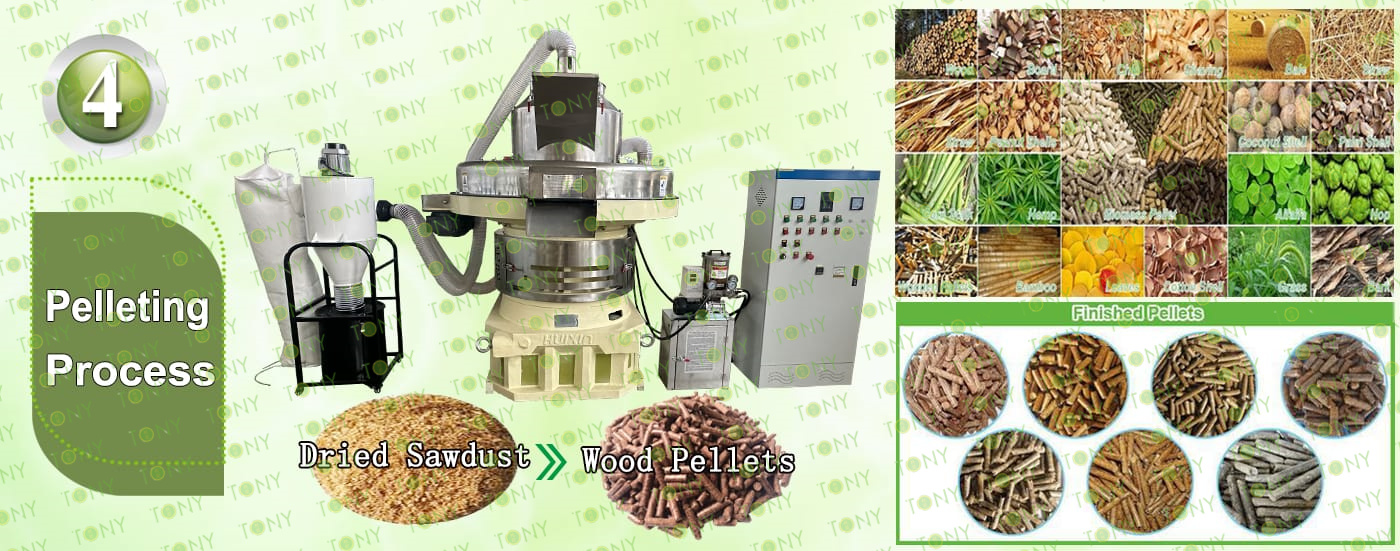
|
4.Pelleting Process: A.This process is mainly used to to product pellets into φ6-8mm. B.Capacity:2.5-3Ton/Hour. C.The Customer Chose 1 Sets Of TONY Brand Vertical Ring Die Pellet Machine TYJ760-III-160KW With Capacity 2.5-3Ton/Hour. Main Parts: 1). TONY's new Vertical Ring Die Pellet Machine. 2). Cyclone And Bags Dust Collectors. 3). Bearings Automatic Lubrication System. 4). Electrical Cabinets. You can choose TONY new type SS304 pellet machine or old type MS pellet machine. |

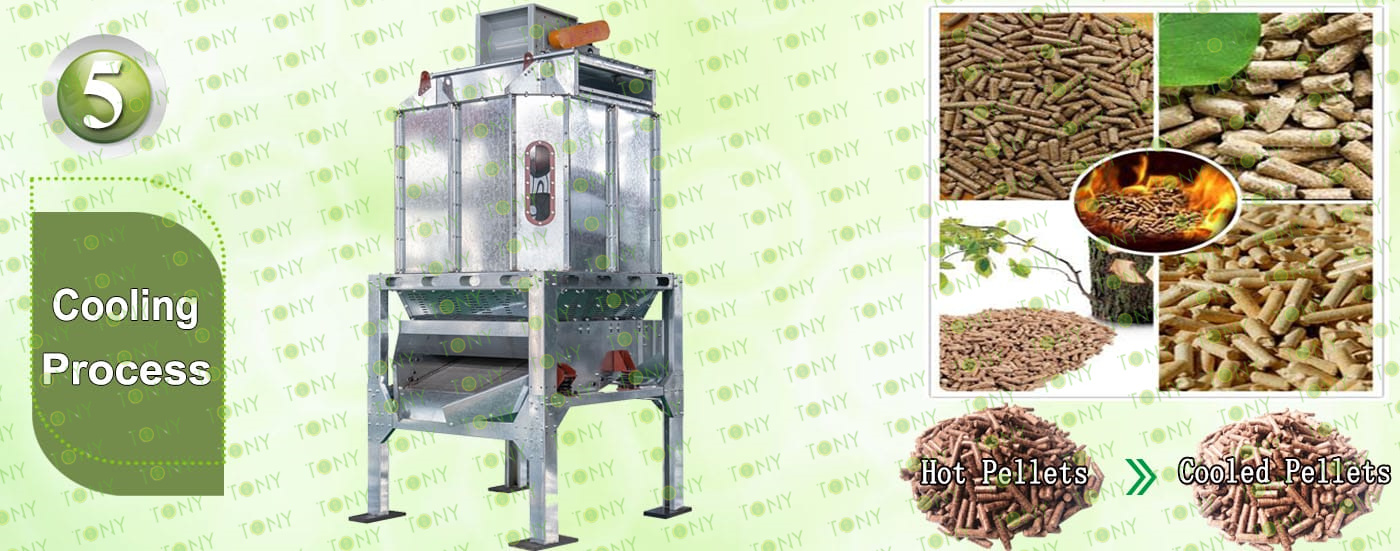
5.Cooling Process:
A.This process is mainly used to To Cool Pellets From 80-90℃ to 20-30℃
B.The Customer Chose 1Set Of TONY Galvanized Cooler Seperator With Capacity 3-4Ton/Hour
Main Parts:
(1)TONY's new Galvanized Cooler Seperator With Vibrating Screen.
(2)Cycone and bags dust collectors.
(3) Fan Blower.
(4)Connect Pipes.

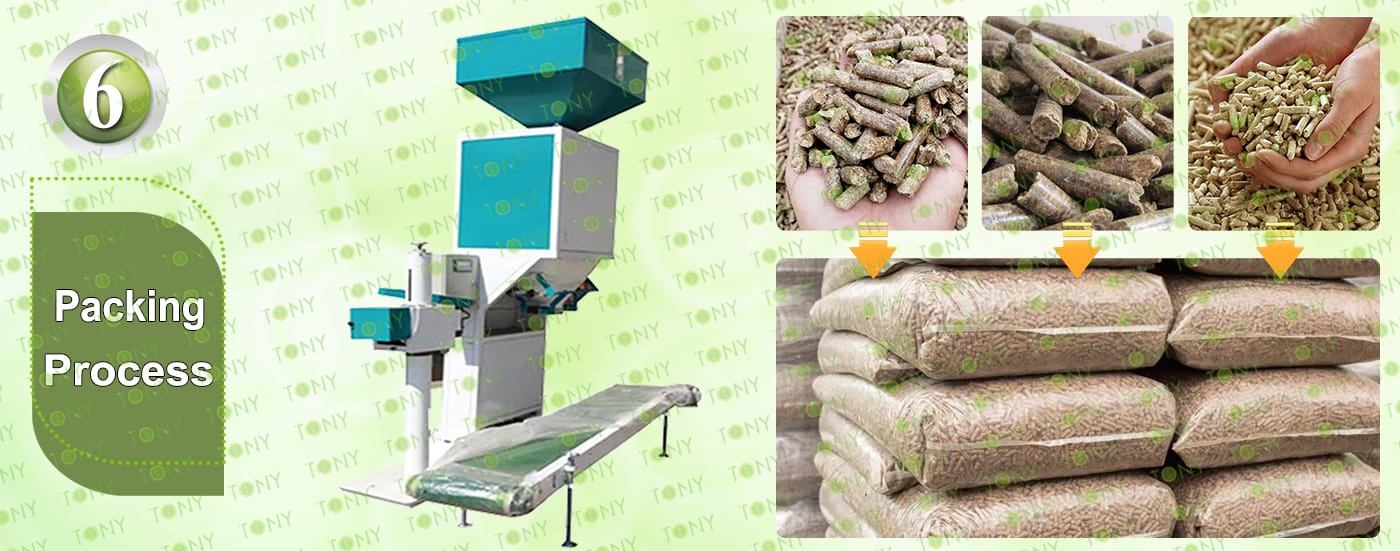
6. Packing Process:
A.This process is mainly used to pack oellets into 15-50KG/Bags.
B.The customer chooses 1 set of TONY Semi-Automatic Dual Packing Machine.
Main Parts:
(1). TONY's new TONY Semi-Automatic Packing Machine.
(2). Sew Machine, buyer can also choose Hot Seal Machine for chosen,to confirm with TONY for the price difference.
(3). Bags Transportation Conveyors.
(4). Feeding Inlet Silo With 1㎥.
(5). Electrical Cabinets.



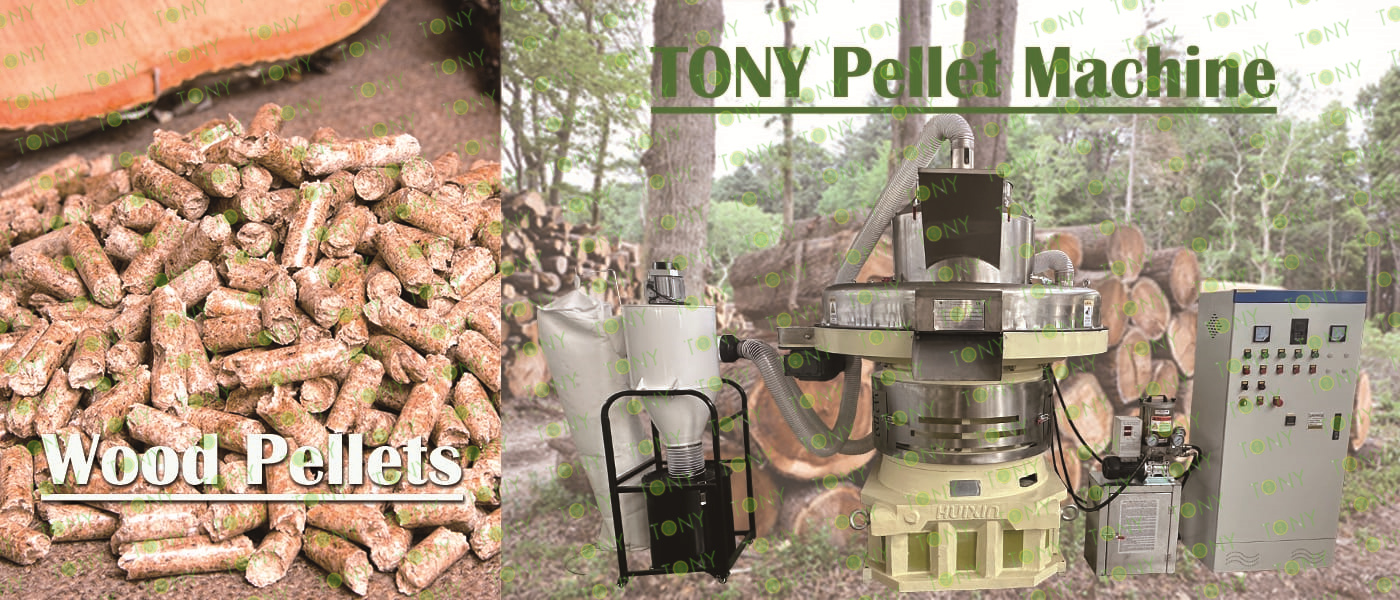
1. With the increasingly severe energy and environmental crisis, biomass energy, as a renewable and clean energy source, has received growing attention. Taking crop straw as an example, its potential for in - depth development is enormous. There are various ways to utilize biomass, and processing biomass into compressed pellet fuel is an advanced approach to biomass utilization. The sulfur content in biomass pellet fuel is less than one - tenth of that in coal. Replacing coal combustion with it can effectively reduce the emission of sulfur dioxide in the atmosphere, and the ash generated after combustion is an excellent natural fertilizer. At present, the gasification combustion of biomass pellets is a clean and environmentally friendly combustion mode, which is of great significance for reducing pollution emissions and protecting the atmospheric environment.
2. Crop straw, as an extremely important resource in agricultural production, is very common in rural areas and exists in huge quantities. For a long time, there has been a lack of good treatment methods for straw. If it is burned on - site, it will cause pollution to the environment. However, choosing straw as the raw material for biomass pellets results in extremely low raw material costs. If there are a large number of straw resources in or around the area, the raw material cost can be almost negligible.
3. Biomass fuel is not only environmentally friendly but also provides an option for the country's energy needs. The market demand for biomass fuel is constantly increasing, and the price of biomass pellet energy made from straw is also rising steadily. For entrepreneurial projects, there is a considerable profit margin. Therefore, using straw to produce biomass pellets has multiple benefits. Besides protecting the environment and helping to solve employment problems, it can also bring considerable economic benefits and ensure the sustainability of energy.

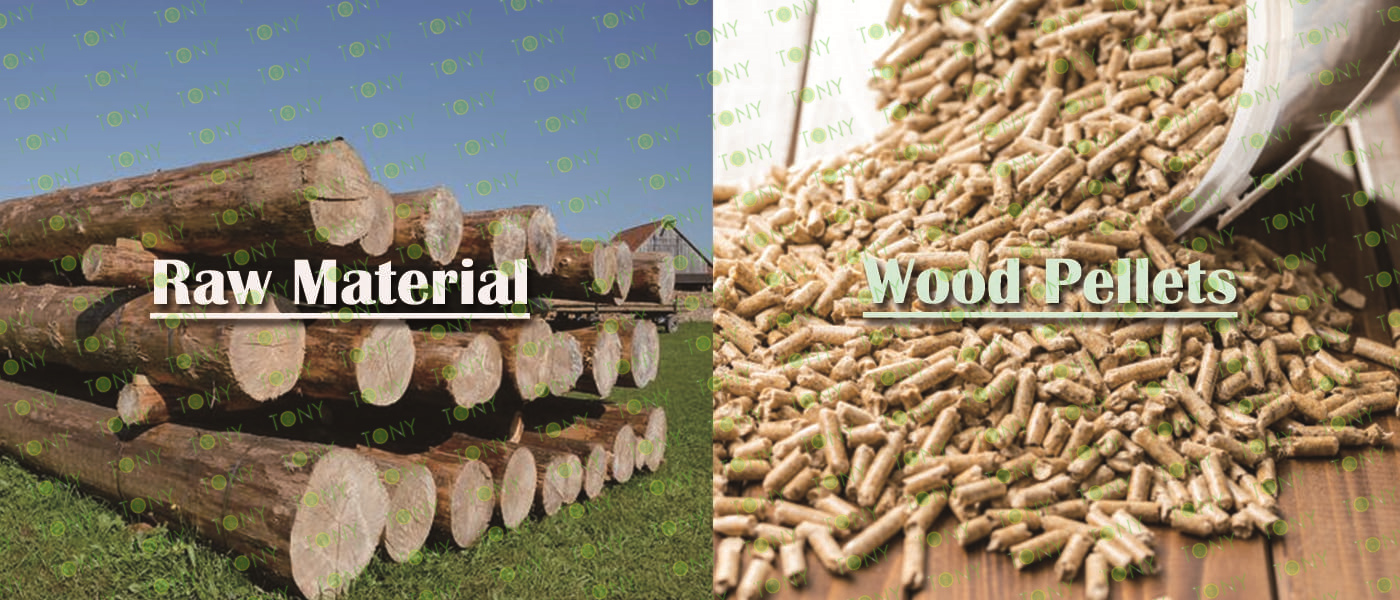
Advantages Of Wet Wood As Biomass Pellet Fuel
When wet wood is processed into biomass pellet fuel, it offers numerous advantages, which are not only evident in environmental protection, economic aspects, and contributions to social development and energy structure improvement, but also in its unique combustion performance. The main advantages are as follows:
1. Calorific Value And Combustion Residue
The calorific value of wet wood biomass pellet fuel after combustion, as well as its ash content, is approximately 10% lower than that of medium - grade coal. However, wet wood biomass pellets burn out completely under normal working conditions. In contrast, coal cannot burn out entirely, leaving cinders with a combustible composition accounting for 10% to 15% of the total. As a result, in practical applications, the effective calorific values of the two are comparable.
2. Ignition Ease
Wet wood biomass pellet fuel has a better ignition property compared to coal. It ignites easily, significantly reducing the ignition time required for starting the combustion process.
3. Solid Emissions
The solid emissions of wet wood biomass pellet fuel are much lower than those of coal. This not only cuts down on the cost of slag disposal but also reduces environmental pollution. The solid emissions of wet wood biomass pellet fuel are mainly ash, accounting for about 0.4% - 7.0% of the total weight. In contrast, the solid emissions from coal combustion are a mixture of ash, alkali, and unburned coal, making up about 25% to 40% of the total weight.
4. Air Pollution And Corrosion
The degree of air pollution and boiler corrosion caused by coal is far greater than that of wet wood biomass pellet fuel. Coal soot contains a large amount of particulate carbon and toxic and corrosive gases such as SO₂ and CO. The main component of wet wood biomass pellet fuel is C - H organic matter. There is no particulate carbon and SO₂ gas in its flue gas. Instead, it mainly consists of C - H volatile gases, and its SO₂ and CO emissions are nearly zero. When burned, the smoke color is less than Ringelmann 1 level. This greatly reduces air pollution and carbon dioxide emissions, and wet wood biomass pellet fuel is internationally renowned as a "clean fuel."
5. Cost And Time Savings
Using wet wood biomass pellet fuel for boiler operation incurs less cost and time compared to burning coal. For example, a 0.5t boiler using wet wood biomass pellet fuel costs 11% less than when burning coal and saves 34% of the time. In another case, for a 0.5t boiler, the fuel cost relative to coal is reduced by 10%, and the time saved is 16%.
6. Continuous Combustion
The continuous combustion time of wet wood biomass pellet fuel is generally 8 to 10 times longer than that of soft, bulk materials. It can maintain a stable and continuous combustion state, ensuring a more reliable energy supply.





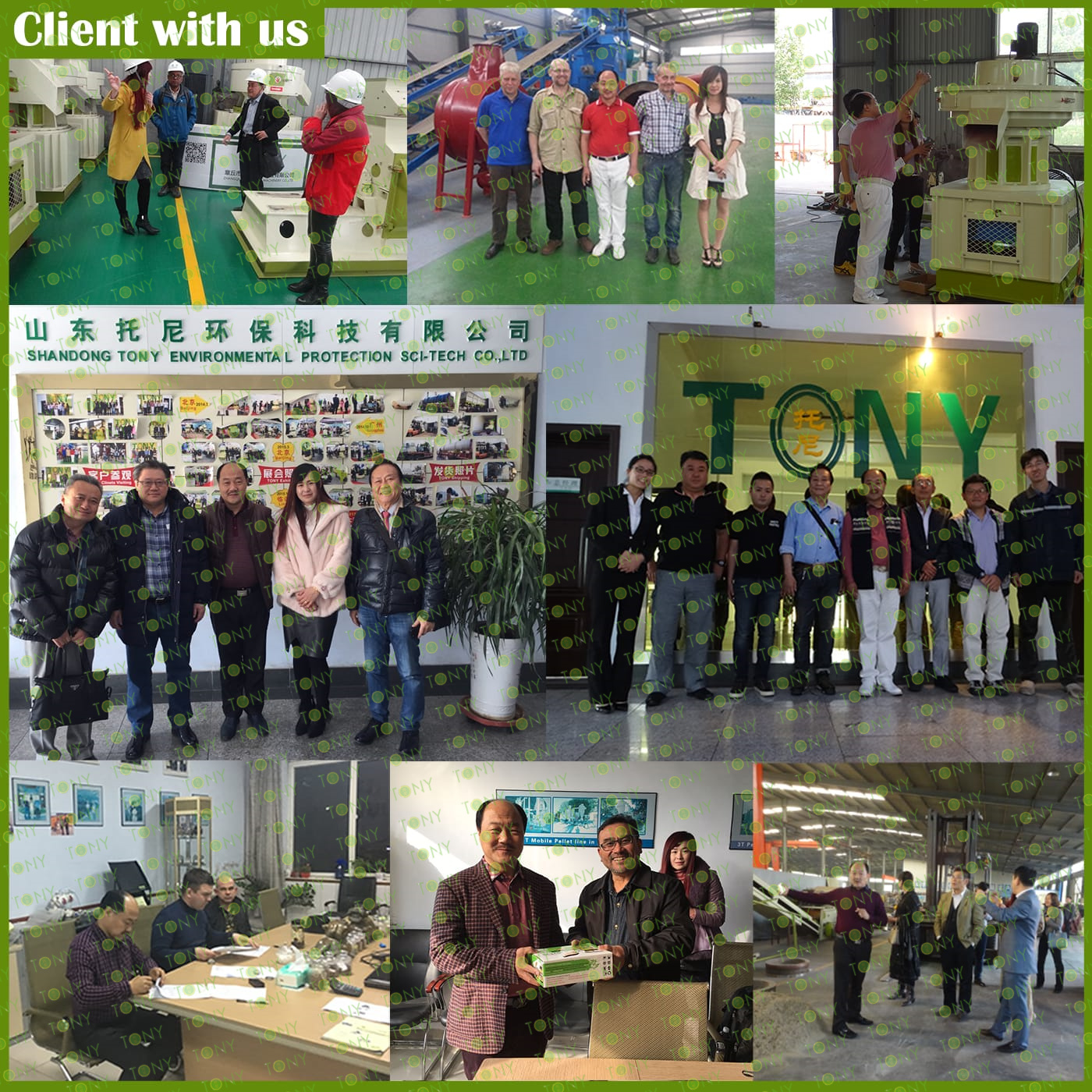
2025 Tony Machinery - All Rights Reserved. Map